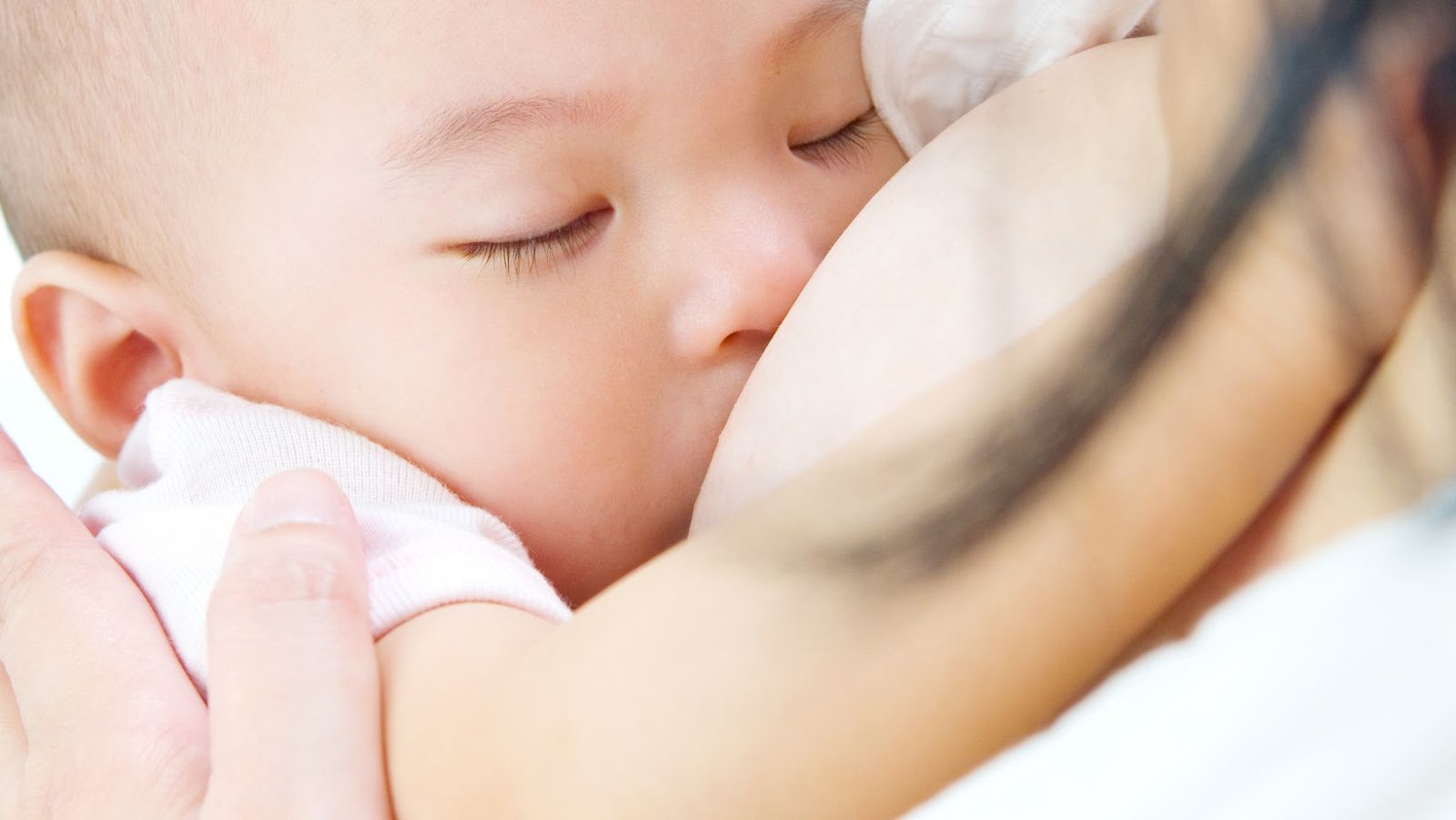To understand whether it’s safe to take elderberry while breastfeeding, let’s delve into the definition and importance of elderberry, as well as the nuances of breastfeeding. This will help you weigh the potential benefits of elderberry against any potential risks to your baby.
Definition of elderberry
Elderberry, also known as Sambucus nigra, is a fruit commonly used to make syrups, jams, and supplements. It contains antioxidants and vitamins that support the immune system.
However, there is no conclusive evidence about the safety of taking elderberry while breastfeeding. Some studies suggest elderberry may reduce breast milk production or cause digestive problems for both mother and baby. Therefore, it’s essential to consult a healthcare provider before taking any supplement while breastfeeding.
Pro tip: Always talk to your healthcare provider before taking any supplement while breastfeeding.
Elderberry: because sometimes you need more than just chicken soup to ward off those pesky colds.
Importance of elderberry
Elderberry, a traditional folk remedy, is highly popular for its medicinal benefits. It has been used for centuries to treat various illnesses like cold, flu, and fever. But the question remains – can you take elderberry while breastfeeding?
The answer is yes but with certain precautions. Studies suggest that elderberry is safe during breastfeeding, however, it’s recommended to consult a doctor before consuming it. It’s crucial to ensure that the dose of elderberry doesn’t exceed the daily limit as an overdose may cause adverse effects on both the mother and baby.
Elderberry has proven to be effective due to its high nutrient content including vitamin C and dietary fiber. Additionally, research suggests that compounds called anthocyanins present in elderberries have anti-inflammatory properties which can help boost one’s immune system.
It’s important to note that while elderberry is safe during breastfeeding, it’s essential to maintain moderation and consult your doctor before consumption.
Don’t miss out on the benefits of elderberry while breastfeeding- speak with your doctor to determine if this natural remedy is right for you.
Breastfeeding may be a beautiful bonding experience, but sometimes it feels like you’ve been attached to a milk machine for eternity.

Can you take elderberry while breastfeeding
Elderberry syrup or tea is said to boost immunity and prevent cold and flu symptoms. Although elderberries are safe for adults, there is limited research on their effects during lactation. Therefore, experts advise that lactating mothers should not ingest elderberry without consulting a physician.
It’s important to note that even if limited amounts of elderberry are deemed safe, unprocessed berries or incorrect dosage could lead to adverse side effects in infants.
According to the American Academy of Pediatrics (AAP), breast milk is the best source of nutrition for babies under six months old. It offers antibodies and other essential nutrients that help infants avoid infections and illnesses.
Looks like you’ll have to find another way to ward off those pesky colds, sorry breastfeeding moms, but elderberry is not on the menu.
Safety concerns about elderberry during breastfeeding
To ensure the safety of your baby while breastfeeding, it is crucial to understand the potential dangers of elderberry. In this segment about the safety concerns of elderberry during breastfeeding, we will discuss the potential harm that elderberry can cause to your baby and the possibility of allergic reactions. To help ensure a safe experience, we will also provide you with some safety tips.
Potential Harm to the baby
The consumption of elderberry during breastfeeding has raised some safety concerns regarding the potential harm to the baby’s health. Studies suggest that this natural remedy can affect breast milk production and may result in adverse effects in infants. It is recommended to avoid using any herbal supplements during breastfeeding without consulting a healthcare provider.
Research has shown that elderberry contains compounds that can induce lactation, leading to excessive milk production. High levels of breast milk can cause discomfort and even affect the baby’s feeding patterns. In addition, elderberry has been linked to gastrointestinal problems, such as diarrhea and vomiting, which can be harmful to infants.
While elderberry is commonly used for its immune-boosting properties, its safety during breastfeeding remains uncertain. It is essential to recognize potential risks associated with herbal supplements and seek medical advice before consuming them.
Mothers should consider alternative remedies or consult with a healthcare professional before using elderberry or any other supplements while breastfeeding. The fear of missing out on the benefits of these remedies may not be worth jeopardizing the health of the newborn babies who are vulnerable to various health issues and complications.
Just when you thought your breastfeeding journey couldn’t get any more challenging, elderberries decide to join the party with their potential allergic reactions.
Allergic reaction
Reported Hypersensitivity to Elderberry During Breastfeeding
Elderberry has gained popularity as a natural remedy for various ailments. However, it may not be safe for breastfeeding mothers and their infants. Reported cases of an allergic reaction to elderberry have raised concerns about its use during lactation.
Symptoms such as hives, itching, and swelling have been reported in infants who were breastfed by mothers taking elderberry supplements. This can lead to severe respiratory distress and require immediate medical attention.
Breastfeeding women should avoid the use of elderberry until more research is done on its safety during lactation. If you experience any symptoms of an allergic reaction after using elderberry, stop immediately, and seek medical advice.
Don’t risk your health or your baby’s health by using elderberry during breastfeeding without proper consultation with healthcare professionals. Stay safe and informed about what you consume while breastfeeding.
When it comes to elderberry safety, remember: better safe than sorry, unless you’re a daredevil who enjoys living life on the edge of potential lactation disaster.
Safety tips
This article discusses the safety of consuming elderberry during breastfeeding. To ensure the well-being of both the mother and the infant, it is essential to take certain precautions. Here are six safety tips for nursing mothers who want to consume elderberries:
- Consult with a healthcare professional before adding elderberry products to your diet.
- Only choose elderberry products from reputable sources that use high-quality ingredients.
- Be sure to follow dosing instructions carefully, as too much elderberry can cause adverse effects.
- Monitor for any allergic reactions by consuming small amounts initially and gradually increasing them.
- If experiencing any negative symptoms, discontinue use immediately and seek medical attention.
- Remember that natural remedies like elderberry should not replace conventional treatments or medicines advised by a healthcare professional.
In addition, nursing mothers may also consider alternate options that do not carry any risks. For instance, they could consume immune-supportive foods like citrus fruits, leafy vegetables, and ginger.
Pro Tip: While elderberry has shown some benefits in boosting immunity, it is crucial to prioritize maternal and infant safety before using any alternative remedies during breastfeeding. Don’t worry, there are benefits to elderberry during breastfeeding too, like warding off vampires (just in case).

Benefits of elderberry while breastfeeding
In order to reap the benefits of elderberry while breastfeeding, you can focus on boosting your immune system, getting a rich source of vitamins, and enhancing your general wellness. By incorporating elderberry into your diet, you can give your body the support it needs while also ensuring the health of your baby.
Boosting the immune system
Boosting the body’s natural defence system
- Elderberry is an excellent source of antioxidants that can aid in a healthy immune system.
- Research indicates that elderberry may reduce symptoms and duration of colds, flu and other illnesses, thus strengthening the immune system.
- The flavonoids in elderberry also have anti-inflammatory and antioxidant benefits, further supporting the immune system.
- Elderberry is a natural substance that can assist in optimizing our body’s ability to fight off common infections and diseases.
Elderberries contain anthocyanins, which are water-soluble pigments with antioxidant properties. These pigments are responsible for their blue-black colour and are found naturally in fruits and vegetables. Elderberries also contain vitamins A, B, C, calcium, magnesium, potassium and iron.
Consume elderberry tea or syrup daily to enhance your immune system while breastfeeding. Additionally, ensure proper nutrition intake to maintain robust physical health during this stage. Regular exercise enhances the immune response too. Adequate rest is equally important; get 7 to 9 hours of sleep each night. Avoid unnecessary stress by indulging in relaxation techniques like meditation or yoga. With these measures in mind, breastfeeding mothers can boost their immunity naturally with elderberries’ help!
Elderberry: the multi-vitamin of the breastfeeding world, without the chalky aftertaste.
Rich source of vitamins
Elderberry is an excellent natural source of vitamins that can be highly beneficial for breastfeeding mothers. With a wide range of vitamins, such as vitamin C, iron, and potassium naturally present in it, it can provide essential nutrients to the mother and her baby. This makes it an ideal food choice that can enhance the overall health and well-being of the mother.
Moreover, elderberries are rich in antioxidants that work to reduce oxidative stress in the body while promoting healthy breast milk production. Additionally, they possess anti-inflammatory properties that help to alleviate instances of soreness or pain in breastfeeding mothers. Thus, incorporating elderberries into a balanced diet offers various advantages for both maternal and infant health.
Furthermore, Elderberry is considered safe for breastfeeding parents; however, it is still recommended to consult with a healthcare provider before opting for any dietary changes. After all, every individual’s specific needs must be catered to as per their respective requirements.
Don’t miss out on experiencing the tremendous benefits that elderberries offer while breastfeeding. Small changes like adding this superfood to your daily routine can genuinely make a significant difference in your overall health journey. So why wait? Consult your doctor today and embark on your self-care journey now!
Who needs a multivitamin when you have elderberry? Breastfeeding moms, rejoice!
General wellness
Maintaining Optimal Health while Breastfeeding
Breastfeeding mothers often worry about maintaining their health while meeting the nutritional demands of their babies. Including elderberry in the diet can help boost overall wellness during this vital time. Elderberry is rich in antioxidants, vitamins, and minerals that support the immune system.
Furthermore, studies suggest that elderberry may have antimicrobial properties that can protect against common respiratory viruses and infections. This benefit can be particularly useful during the winter months when cold and flu season is at its peak.
In addition to its immune-boosting properties, elderberry has also been shown to reduce stress and inflammation. Integrating natural remedies like elderberry into one’s daily routine can lead to a better quality of life for both mother and child’s well-being.
Don’t miss out on the potential benefits that elderberry offers while breastfeeding. Consult with your healthcare provider before incorporating any new supplements or dietary changes.
Take a hint from Goldilocks and find the perfect combination of foods and supplements to pair with elderberry while breastfeeding, not too much, not too little, but just right.
To wrap up your research on whether or not it’s safe to consume elderberry while breastfeeding, the conclusion of the matter is that all the benefits and risks need to be carefully considered. In order to make an informed decision on whether to take elderberry, it’s important to understand the summary of its benefits and risks. Finally, you’ll find the verdict on whether or not it’s safe to consume elderberry while breastfeeding.
Summary of the benefits and risks of taking elderberry while breastfeeding
Evaluating Elderberry’s Effects on Breastfeeding Mothers
The following is a thorough analysis of the potential upsides and downsides of taking elderberry while breastfeeding. The information below is intended to educate and inform readers who are considering incorporating elderberry into their breastfeeding routine.
- Benefits:
- May offer immune-boosting properties
- May help fight respiratory infections
- Rich in antioxidants
- Might reduce inflammation in the body
- Risks:
- No scientific studies have been conducted proving it safe for breastfeeding mothers or infants.
It is important to note that, while several benefits have been attributed to elderberry consumption, there are limited clinical studies available about its effects on nursing mothers and their babies. It’s best to err on the side of caution if you decide to consume this supplement and consult a healthcare professional first.
Historically, elderberries have been used for natural medicine dating back as far as Ancient Egypt. In 400BC Hippocrates, known as the father of modern medicine, referred to the plant as his “medicine chest” due to its many medicinal uses. Today, elderberry can be found in a variety of forms including teas, syrups, and capsules- all with varying dosages. Always do your research or seek medical advice before taking any supplements while also breastfeeding. Breastfeeding and elderberry may not mix, but at least your pancakes will taste great.
















